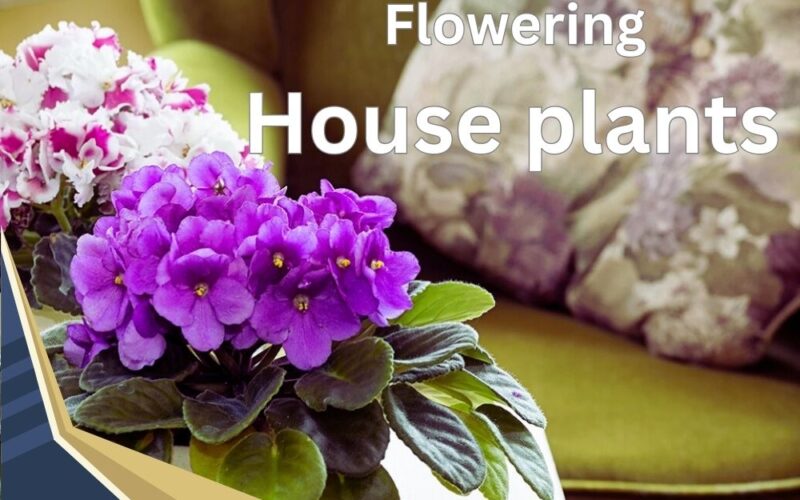Common flowering house plants with small blooms can be the perfect choice to enhance your ability to focus and concentrate on tasks. You can find them with their colourful flowers.
In this article, I first give you a list of the best small flowering house plants, then I will give you pro tips about their caring requirements. If you want to grow your small flowering indoor plant outdoors too, in the following you can find a list of those that can thrive in outdoor conditions with tips that help to their viability.
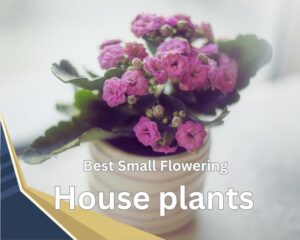
Finally, I provide you with a list of Easy-Flowering Houseplants that are perfect for new gardeners who want to bring liveliness to their house with colourful small flowering houseplants.
| For those who are busy:
➡ Hear the audio version of this article (it is summarized)
|
List of Best Small Flowering Indoor Plants
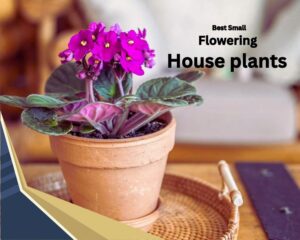
- African Violet (Saintpaulia spp.)
- Begonia (Begonia spp.)
- Cyclamen (Cyclamen spp.)
- Gloxinia (Sinningia speciosa)
- Primrose (Primula spp.)
- Lipstick Plant (Aeschynanthus spp.)
- African Mask Plant (Alocasia amazonica)
- Flamingo Flower (Anthurium andraeanum)
- Spider Plant (Chlorophytum comosum)
- Chenille Plant (Acalypha hispida)
- Crown of Thorns (Euphorbia milii)
- Lavender (Lavandula spp.)
- Kalanchoe (Kalanchoe spp.)
- Impatiens (Impatiens spp.)
Caring for Small flowering house plants indoor
Here, you can find a collection of the best small flowering house plants with their images and pro tips to care for them.
Most plants on our list must be fertilized every month. You must do it during their growing season. It will be great if you use a balanced, water-soluble fertilizer that is formulated specifically for every plant. Some plants that need another way for fertilizing, I mentioned specifically in the following.
In addition, as with most houseplants, the following plants will be happy if you plant them in a well-draining potting soil that is a mix of peat moss, perlite, and vermiculite. These organic matters will provide good aeration in the soil. if you add added peat moss or coconut coir, you will improve the moisture retention ability of potting soil.
African Violet (Saintpaulia spp.):
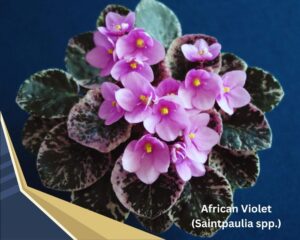
Watering: It should be better that you water the African Violets from the bottom to avoid getting their leaves wet. Try to water it with room-temperature water.
This plant loves to keep the soil consistently moist but not waterlogged. Hence you should allow the top inch of soil to dry before watering again. Note that when the top soil gets dry out, the deeper parts of the soil are still wet.
Lighting: This plant is one of the Small flowering house plants that will be happy if you provide bright, indirect sunlight for it. So, try to put it near the southern windows. Never put it in direct sunlight that will cause scorching of the leaves.
Propagation: can be propagated from leaf cuttings is the best and easiest way for propagating African Violets. To do it, you must select a healthy leaf and then you must cut it at an angle, finally, you must place it in a moist potting mix. Please wait till the new plants grow from the cuttings.
Begonia (Begonia spp.):
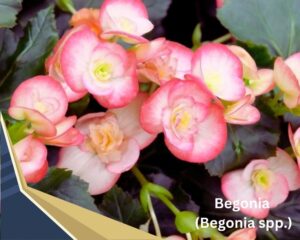
Watering: Although this plant prefers consistently moist soil you should water it again only when the top inch of soil dries out. Begonias is sensitive to fungal diseases such as root rot.
Lighting: Although some varieties of begonia can tolerate lower light conditions if you want to enjoy its eye-catching small colourful flowers. you must put it in a bright, indirect light place in your house.
Propagation: Leaf or stem cuttings are the best way for propagation of Begonias. Not that you must plant the cuttings in a well-draining potting soil to prevent root rot.
Cyclamen (Cyclamen spp.):
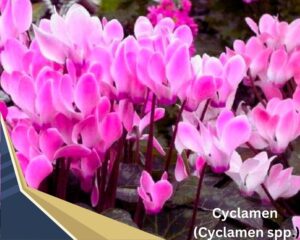
Watering: The best way for watering Cyclamen is watering from the bottom. It keeps the corm (bulb-like structure) from wetting. Although Cyclamen prefers to be kept moist you must add water only when the top inch of soil dries.
Lighting: The best place in your house for the healthy growth of Cyclamen is a place with cooler temperatures and indirect sunlight.
Propagation: Cyclamen is propagated from seeds.
Gloxinia (Sinningia speciosa):
Watering: This plant loves that you keep the soil consistently moist but please note that there is a difference between wet soil and waterlogged conditions. If you have a heavy hand in watering, you must think about very well-drained soil.
I recommend watering at the base. It will prevent fungal disease. But avoid sitting the roots in water.
Lighting: Gloxinia hates harsh, direct sunlight you must put it in place in your house with a bright, indirect light.
Propagation: You can propagate Gloxinia from leaf cuttings. Place a leaf with a petiole (stalk) in a moist potting mix to encourage root development.
Primrose (Primula spp.):
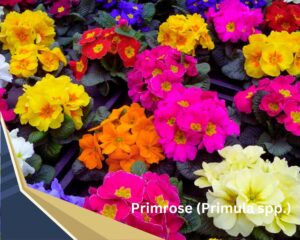
Watering: This plant cannot tolerate drought soil and you must keep the soil consistently moist. Please note that waterlogged conditions will kill your plant (the risk of root rot).
It will be okay if you water Primrose from the base to prevent fungal diseases.
Lighting: This plant is one of the Small flowering house plants that can tolerate low light conditions for a short period. If you want to see its shiny blooms you must put it in a bright, indirect light place, however, it can thrive in partial shade too. Avoid direct sunlight.
Propagation: You can propagate it in two ways: planting seeds or division of established plants.
African Mask Plant (Alocasia amazonica):
Watering: This plant needs wet soil during the growing season (spring and summer) but you must reduce watering in the winter. Use well-drained soil to decrease the risk of root rot.
Lighting: African Mask Plants love bright conditions with indirect light but avoid putting them in direct sunlight, which can cause the leaves to scorch.
Propagation: Alocasia has rhizomes, so, you can easily propagate it by dividing the rhizomes when repotting.
Flamingo Flower (Anthurium andraeanum):
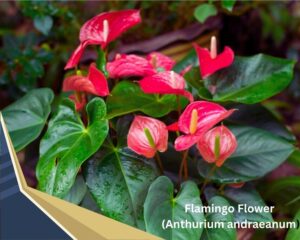
Watering: You must provide wet soil conditions (not waterlogged) for the healthy growth of this plant. To prevent soggy soil (that increases the risk of root rot), water your plant only after spotting the top inch of soil that feels dry (note avoid complete drought conditions).
Lighting: Flamingo Flower needs a bright place with indirect light to show its stunning flowers. It is a tropical flowering houseplant and you must protect it from direct sun.
Fertilization: The period of fertilizing of this plant is longer than other flowering houseplants (every 6-8 weeks during the growing season) and you should feed it with a balanced liquid fertilizer in spring and summer.
Propagation: The best way for propagating Anthuriums is division during repotting.
Spider Plant (Chlorophytum comosum):
Watering: Spider plants will be happy in slightly moist soil but they hate sitting their roots in water. You should water this plant when you spot the top inch of soil to dry out.
Lighting: Spider plants can tolerate low-light rooms in your house; hence they can be the perfect choice for dim bedrooms. In addition, they can purify the air too. However, this plant loves to thrive in bright rooms with indirect sunlight light.
Propagation: The best time for propagating this plant is when repotting it. Spider plants produce “pups” or offsets. During repotting you can separate them and pot them into new containers.
Chenille Plant (Acalypha hispida):
Watering: Chenille plants thrive healthy in high-humidity environments and love wet soil but keeping roots in a waterlogged soil will cause root rot.
Lighting: Put this plant near the southern windows to provide bright conditions with indirect sunlight. Note it hates direct sunlight.
Propagation: You can easily propagate the Chenille plants through stem cuttings. You must place cuttings in a moist potting mix with well-drained soil.
Lipstick Plant (Aeschynanthus spp.):
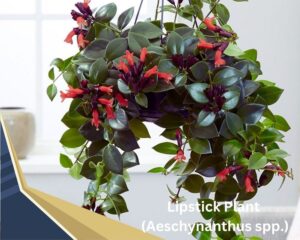
Watering: Lipsticks are Small flowering house plants that love soil slightly moist but hate soggy soils that cause their roots to sit in water. You must water it only when the top inch of soil dries.
Lighting: As with most houseplants you should provide bright, indirect light but protect from direct sun.
Propagation: Stem cuttings are the best way to propagate Lipstick plants to gain a good result, Plant cuttings in a moist potting mix with good drainage.
Crown of Thorns (Euphorbia milii):
Watering: This plant is one of the succulent flowering house plants hence it will be hurt from overwatering. You must water it sparingly, especially during the winter. Before watering note that the top inch of soil to dry out.
Lighting: If you want to add colours and vitality to your home with the blooms of Crown of Thorns, you must put its pot in a bright place in your house with indirect light. You can also give it partial sun but protect this plant from the intense afternoon sun.
Propagation: Stem cuttings are the easiest way to propagate Crown of Thorns if you let the cut end the callus before planting.
Soil Mixture: As with other succulents you must use cactus or succulent potting mix that has a well-draining texture.
Lavender (Lavandula spp.):

Watering: This plant loves to live in soils with drier conditions. Hence if you have a heavy hand in watering, lavender is not a good choice for your house. But if you can give it water based on its intake of water, you can grow it in pots without holes.
Lighting: Put its pots in a place with full sun. this plant needs at least 6-8 hours of direct sunlight daily to show you its beauty.
Fertilization: Lavender (unlike most house plants) doesn’t require to feed with much fertilizer. Hence it will be enough if you add a balanced, slow-release fertilizer sparingly in spring to its soil.
Propagation: The two common ways to propagate Lavender are stem cuttings and dividing established plants.
Soil Mixture: Plant your Lavender in sandy, alkaline soil with well-drained conditions.
Kalanchoe (Kalanchoe spp.):
Watering: Kalanchoe is a succulent flowering indoor plant that can thrive happily in soil with slightly dry conditions. So, you must let the soil dry out between waterings.
Lighting: These Small flowering house plants will be great if you place them in bright conditions with indirect light and some direct morning sunlight.
Fertilization: During the growing season, you can feed it with a balanced liquid fertilizer every 6-8 weeks.
Propagation: Create leaf or stem cuttings and plant them in a moist potting mix.
Soil Mixture: Like other succulents, Kalanchoe must be planted in a well-draining cactus or succulent potting mix.
Impatiens (Impatiens spp.):
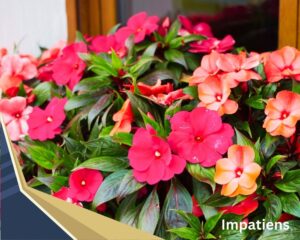
Watering: Impatiens love to grow in environments with high humidity. Hence keep its soil wet but not waterlogged
Lighting: This plant hates direct sunlight and grows healthy in places with de bright, indirect sunlight or dappled shade
Propagation: The two most common ways to propagate Impatiens are stem cuttings and planting seeds.
Small flowering house plants outdoor
If you are interested in putting your houseplant with its vibrant colours in your outdoor garden, here you can find a list of small flowering house plants for the outdoors with tips for their healthy growth. Please note that the success of outdoor cultivation depends on climate and care conditions.
Hence you must always consider your local climate and provide the appropriate care to healthy growth when moving houseplants outdoors.
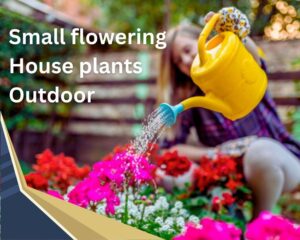
Begonia (Begonia spp.):
Many begonia varieties can thrive outdoors in the right conditions but you must bring them indoors during the winter or cover them with a frost cloth to protect them from frost. Plant them in well-draining soil with partial to full shade. and enjoy its small white flowers, however, there are a lot of varieties with colourful blooms.
Due to their love for wet soil (not waterlogged conditions) try to maintain soil moisture by adding mulch.
Cyclamen (Cyclamen spp.):
Cyclamen is a perfect choice because it can grow in cool, shaded areas. You should protect it from hot and direct sun. its dormant period is in summer you must reduce watering during this period.
Primrose (Primula spp.):
Primrose is a perfect choice for growing outdoors, especially in cool, temperate climates. This plant needs well-drained wet soil. you can do it by adding mulches to the soil. to protect it from overheating in hot climates, you must provide afternoon shade for it. Pruning the spent flowers will encourage your plant to new blooms.
Spider Plant (Chlorophytum comosum):
If you live in one of the temperate climates you can grow Spider Plants both indoors and outdoors. they are relatively hardy plants that can tolerate some temperature variations.
Crown of Thorns (Euphorbia milii):
If you live in a warm, arid climate, Crown of Thorns can thrive outdoors. You must be cautious of overwatering, as these plants are kind of succulents and drought-tolerant.
Impatiens (Impatiens spp.):
Impatiens can grow outdoors in gardens, especially in shaded areas. You must protect this plant from hot and direct sunlight. They like wet soils so try to keep the soil moisture with mulching.
Easy-Flowering Houseplants:
Some indoor plants can produce stunning blooms but not easily. If you are a new gardener but love to bring liveness to your house by adding small flowering house plants, I provide you with a list of Easy-Flowering Houseplants. These indoor plants are considered easy to encourage into flowering indoors.
Please note that the success of flowering depends on various factors, including proper lighting, watering, and temperature conditions. With the right care, these plants should reward you with beautiful blooms. Let’s find them.
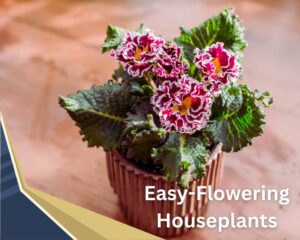
African Violet (Saintpaulia spp.): African Violets are known for their prolific and consistent flowering when provided with the right care. They can produce colourful blooms throughout the year, making them a popular choice for indoor gardens.
Begonia (Begonia spp.): Many Begonia varieties are easy to cultivate indoors and often bloom in the right conditions easily.
Primrose (Primula spp.): Primroses are relatively easy to coax into flowering indoors typically in late winter to early spring.
Kalanchoe (Kalanchoe spp.): Kalanchoe plants are known for their vibrant, long-lasting flowers, they readily bloom indoors during the winter months. it is a flowering succulent with small pink, white, yellow, orange, and purple blooms.
Impatiens (Impatiens spp.): Impatiens are often used as bedding or potted plants indoors that can easily tend to flower in the right conditions.
Conclusion
Now, you have a list of the best small flowering house plants indoors. You know a lot of pro tips to care for them. I told you about ones that can thrive outdoors too and I provided you with easy flowering houseplants that are perfect for new gardeners.
Can you raise our list with new plants? Do you think which Small flowering indoor plants are perfect for the living room? Begonia is always on top of my list what about you? please share your ideas and experience with our readers below this page.

Elahe Rabiei
Hi, I’m Elaheh. My Academic major is plant protection, and houseplants are my expertise. As a houseplant lover, my house is full of indoor plants and it is my passion to take care of them. Hence, I’m here to share my knowledge and experience about growing healthy houseplants. I am also a plant protection advisor, so feel free to ask me any questions you may have.

